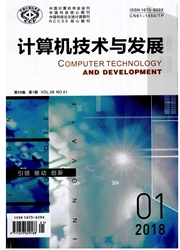

 中文摘要:
中文摘要:
超宽带作为一种高速无线通信技术,具有很多优势,但是其过高的带宽造成采样困难的问题。考虑到超宽带信号和信道固有的稀疏性且信道稀疏性未知,贝叶斯压缩感知提供了一种低速采样方法,将信道估计问题转化为压缩感知理论中的重构问题。压缩感知理论的关键在于信号的稀疏表示与观测矩阵的设计。目前常用的单位矩阵字典和多径字典并没有使信号具有最大的稀疏度,重构所需要的观测数目较大;并且常用的随机观测矩阵与稀疏表示字典相关度较高,算法必须在降维比较高时才能达到重构要求,采样速率依然较高。针对上述问题,文中提出使用特征字典表示稀疏信号,并使用贝叶斯压缩感知理论中的自适应观测矩阵设计方法进行信道估计。通过将二者结合,特征字典使信号具有最大的稀疏度,自适应观测可以用较少的观测值进一步提高重构算法的精度,达到进一步降低采样速率的目的。仿真结果表明,使用特征字典与自适应观测矩阵联合的贝叶斯压缩感知进行超宽带信道估计可进一步降低采样速率,并具有更好的性能。
 英文摘要:
英文摘要:
Ultra-WideBand (UWB), as a wireless communication technology of high speed, has many advantages. However, it' s difficult to sample due to its ultra-wideband. Considering the inherent sparsity of UWB signal and channel and the unknown sparsity of channel, Bayesian Compressive Sensing (BCS) provides a method of sampling with low rate, which converts channel estimation into signal recon- struction. In CS ,the crucial issue is to find the representation of the target signal and the measurement matrix. At present,the usual-used identify matrix and multipath dictionary can' t provide the sparsest representation. It still requires a large number of measurements to re- construct the original signal. What' s more, the measurement matrix is highly correlative with the dictionary,leading to a large number of measurements for signal reconstruction. The sampling rate is still very high. To solve the above problem, propose an eigen-based dictiona- ry and adaptive measurement matrix for UWB channel estimation in this paper. Eigen-based dictionary enables the sparsest representation and adaptive measurement matrix can improve the reconstruction accuracy with fewer measurements, which realizes the lower sampling rate. The simulation result shows that combining the eigen-based dictionary and adaptive measurement matrix in BCS for UWB channel estimation can provide better performance with lower sampling rate.
 同期刊论文项目
同期刊论文项目
 同项目期刊论文
同项目期刊论文
 期刊信息
期刊信息
